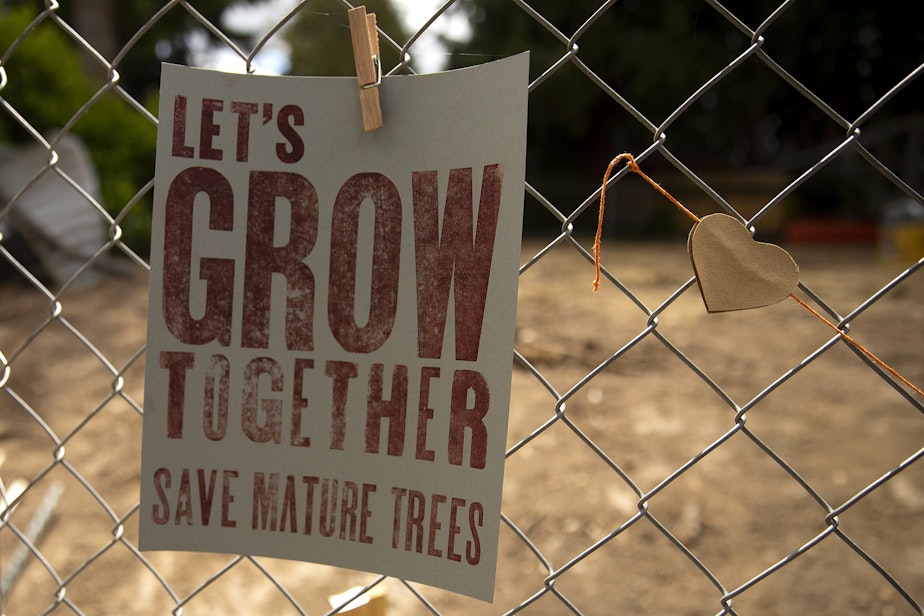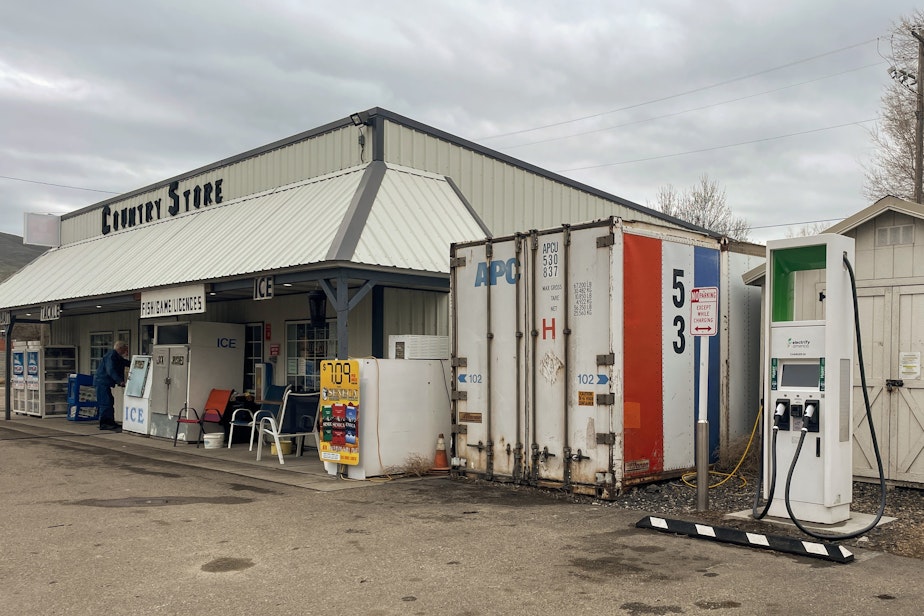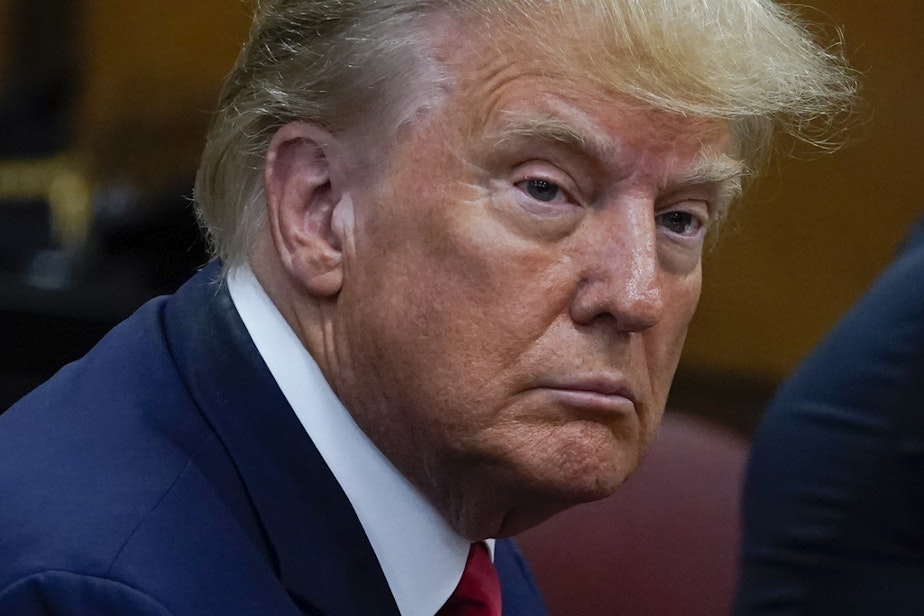Treeless in Seattle: Today So Far

Concerned about Seattle's tree canopy, but aren't inclined to climb some branches in protest, there's another option that could really help add some green to the city.
This post originally appeared in KUOW's Today So Far newsletter for July 18, 2023.
Quick hits
- Free clinics aim to bolster childhood vaccination rates in King County
- Mullet Mania: Northwest kids compete in national Mullet competition
- 'We can't let them steamroll our democracy': How covering NW white supremacist groups shaped 2 reporters
Whenever somebody climbs a tree around here, it tends to draw a lot of eyes. That's probably the idea behind Droplet's protest in Seattle's Wedgwood neighborhood.
Droplet is the name of the activist who climbed a Western red cedar slated to be cut down to make way for new housing. The property is being redeveloped to accommodate six units, and the plan was to nix the tree to make room. But folks around the neighborhood weren't too keen on that plan — they'd prefer to keep the wood in Wedgwood. Many protested with signs, and Droplet climbed the 200-year-old tree's branches to prevent any cutting. The company hired to cut it down has since backed out of the job. The city has also stepped in to hit pause.
If you care about Seattle's tree canopy, but aren't inclined to climb any branches, there's another route you could go — just plant a tree. We need more of them, so let's put them in the ground.
Sponsored
"The urban forest is all of the trees in the city, no matter where they are planted and that can look different," urban forester Jana Dilley told "Seattle Now." "A natural area in a park is gonna look and feel different, and we manage that differently than the trees along a street, around a bus stop. All those trees work together to be a part of the ecosystem that is the urban forest."
Seattle Public Utilities' Trees for Neighborhoods program is giving away free trees for residents to plant at their own homes. Folks could get up to three. Applications to get a free tree are open right now. Dilley explains that folks will get free trees, free mulch, and other free help so that the tree can thrive.
"We help them decide where that tree should go ... figure out the right space and the right species for you. We do pruning workshops to help you establish that tree so you have a tree that grows strong."
Before you start thinking something like, "What about all these new apartments," or "I have a condo," know that the tree program is open to everybody. You don't have to be a homeowner with a large yard to participate. "Seattle Now's" Patricia Murphy has first-hand experience with this program. She owns a condo in Seattle's Pinehurst neighborhood. She got three paperbark maple trees from the program in 2012. They were planted in an area between the street and her condo.
A large portion of Seattle's trees can be found on city land and in parks, but 58% of trees are located on private land. That means the city's residents play a major role in keeping the city green, literally. With that in mind, Dilley offered a few tree-planting tips for folks aiming to add to Seattle's tree canopy.
Sponsored
- Diversity is key. You want a lot of different types of trees around. As the climate changes, some trees could fare better than others. Or, if a tree disease strikes Seattle, having more species means that not all trees would be affected.
- Native plants are often preferred, but also think of species that can tolerate a changing climate.
- Fall is the best time to plant a tree to give it the best chance of thriving. After that, you should water the tree for five years, during the dry season.
- Think of your space. Large trees are great for the city, but could that tree eventually grow to interfere with powerlines? Will it be too big for your yard at some point? Think about where that tree is headed — up.
What are good native trees? How can this help during our heated seasons? Why haven't I made any obvious tree puns yet? Because I figured for once, I'd leaf the puns alone. Dilley had a lot more to bark about Seattle's trees, so check out the full story on "Seattle Now."
AS SEEN ON KUOW

Charging station at the T&T Country Store in Huntington, Oregon, April 2023. KUOW's John Ryan recently took a road trip from Seattle to Boise using an electric vehicle, testing the Northwest's EV infrastructure. He chronicled the challenges he faced along the way. (Kathleen Lumiere)
Sponsored
DID YOU KNOW?
While talking with "Seattle Now," urban forester Jana Dilley pointed out a few tree options that are native to our region. One such Northwest native tree that I've always thought was cool (yes, trees can be cool, just let it go, OK) is the Pacific yew, aka Taxus brevifolia. You've probably seen it around. It might have looked more like a shrub because this tree grows pretty slowly. But it can get up to about 40-ish feet tall.
The thing about this tree is that the chemotherapy drug paclitaxel originates from its bark. That's how the drug was made from about the late 1960s through the 1990s. Taking the bark from the tree basically kills it, and that means you can't rely on a steady supply, so researchers have developed ways to synthesize the drug over the years.
ALSO ON OUR MINDS

Sponsored
Trump says he received a letter saying he's a target of DOJ's Jan. 6 investigation
Former President Donald Trump says he has received word that he's a target of the grand jury probe into efforts to overturn the 2020 election. Trump says he learned Sunday that he may be charged with a federal crime by a grand jury investigating the siege on the U.S. Capitol on Jan. 6, 2021.

